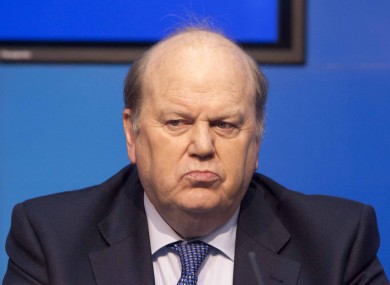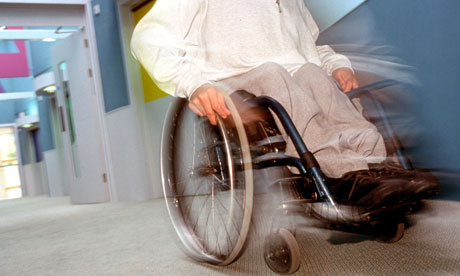Families of Ireland cannot take any more punishing taxes
Martin Phelan expert says

Irish householders have now reached a point where they cannot bear more tax hikes in the Budget, experts warn.
A family with one income of €55,000 and two children is paying an extra €3,400 a year in taxes and levies since 2008.
A sixth austerity Budget next month will be too much for large numbers of people to cope with, the Irish Tax Institute said.
But next month’s Budget is expected to see the introduction of a property tax that is expected to cost a family with a €350,000 home €875 in tax in a full year. The charge is likely to be set at a rate of 0.25pc on the value of the home.
There are also expected to be changes in pay related social insurance (PRSI) and the universal social charge (USC).
President of the tax body
Martin Phelan said more taxes would mean people will spend less, some will work a lot less; while there will be a growth in the black economy.
“Small bases of people are contributing vast amounts of revenue for the Government. It is getting to a dangerous level with fewer people paying more and more taxes with less income,” Mr Phelan said.
Some €1.25bn in extra taxes is expected to be imposed by Finance Minister Michael Noonan in two weeks’ time.
Cuts
And an additional €2.25bn is expected in expenditure cuts. But the tax body said there should be an even greater emphasis on spending cuts, as it would be too damaging to the economy to tax income earners even more.
There is a limit to how much more can be imposed, the tax
Body said. Changes to income tax, the introduction of the universal social charge, the removal of tax reliefs and child benefit cuts have meant those still in a job are paying vastly more tax since the economic downturn hit in 2008.
There are now 1.8 million income taxpayers, down 300,000 from 2007, the tax institute said.
Plans to introduce water charges and a property tax will mean there will have been 10 new taxes imposed on households in the last four years.
These include the income levy and the health levy, which became the universal social charge.
Also included are carbon taxes, the second-homes tax, the household charge, the domicile levy on high earners, the pensions levy on private sector retirement funds and the insurance levy.
Savita Halappanaver death inquiry will go ahead without Praven the husband
HEALTH MINISTER JAMES REILLY SAYS


Health Minister James Reilly has said that the HSE inquiry into Savita Halappanavar’s death will proceed without her husband’s co-operation.
Minister Reilly said that it is regrettable that Praveen Halappanavar has decided not to engage with the investigation at this stage.
Taoiseach Enda Kenny appealed in the Dáil earlier to Mr Halappanavar to meet with the chairperson of the HSE inquiry.
However speaking in an interview to be broadcast on RTÉ’s ‘Prime Time’ tonight, he rejected the call.
“With due respect to the head of the inquiry and the Taoiseach, we won’t partake in the inquiry by the HSE,” he said.
“We want a public inquiry.”
Minister Reilly, speaking at the North South Ministerial Council in Armagh, said that the investigation is going ahead, but he hoped that Mr Halappanavar reconsiders.
“There may come a point where obviously we won’t have the completeness of information without Mr Halappanavar’s input, and to me, that will be regrettable,
“But I want to get the investigation to that point at least, before we have any further public discourse on the matter.”
The inquiry chairperson will soon announce the three new members of the panel, replacing staff from University Hospital Galway.
It is expected that one of the new members will be from the UK.
Irish isolated and ignored protesters demand disability rights


People with disabilities are bearing an unfair brunt of economic cutbacks, campaigners claim
People with disabilities are being ignored and isolated, and bear an unfair brunt of economic cutbacks, campaigners have claimed.
About 2,000 protesters marched to the gates of the Dail to show Government a red card ahead of Budget 2013.
The members of the Disability Rights Coalition said they are demanding their rights, not charity, and called on politicians to stick with promises in the programme for government, including maintaining social welfare rates, a new law to replace the 1871 Lunacy Act.
Spokeswoman Siobhan Kane said: “Everybody talks about the big announcements on budget day, but for people with disabilities it is a gradual drip feed.
“Day by day and week by week, they are told a support or service is being taken away. James Reilly (health minister) doesn’t stand up in the Dail and say people have to organise their own transport or start paying for respite.
“People feel they have no control over any of it and it’s causing huge stress and worries for disabled people and their families.”
There are 600,000 people with disabilities across Ireland – 13% of the population – but Ms Kane warned many are ignored, isolated and bear an unfair brunt of cuts. The disability sector has already suffered budget cuts of 13.7% since 2008.
One woman left caring for her three elder brothers with intellectual disabilities has made a desperate plea for the men to be given residential care.
Aideen Pollard, 46, moved in with brothers Jack, 64, Michael, 63, and Barra, 53, in north Dublin when their elderly mother was diagnosed with Alzheimer’s and went into a nursing home almost three years ago.
The men, believed to have special needs due to the Fragile X syndrome, attend a day service with St Michael’s House (SMH) in Glasnevin, but their sister is fighting for long-term respite care.
‘Diabesity’ Obesity-Diabetes the new epidemic in Ireland & the World


One measure to prevent obesity is to encourage “walkability” of neighbourhoods, urging people to exercise daily. We are heading towards an epidemic of diabetes that threatens to bankrupt our healthcare systems
The incidence and prevalence of type 2 diabetes is increasing worldwide. In Ireland the latest figures by the Institute of Public Health showed that in 2010 more than 10 per cent of adults aged 55 and over have diabetes. More than 41,000 (2.7 per cent) adults aged 45 years and over have undiagnosed diabetes. Diabetes is also more common among older people.
The cause of this is very clear. We are becoming increasingly obese as a population, and the relationship between obesity and diabetes is well established. In fact, the term “diabesity” has been coined to link the relationship between increasing obesity and associated type 2 diabetes.
Some 90 per cent of the world’s 285 million people with diabetes have type 2 which is directly related to obesity. Richard Schulze of the Schulze Diabetes Institute in the US said “the increasing prevalence of obesity – fuelled by excessive calorie intake, suboptimum dietary quality and sedentary lifestyles – is driving this epidemic”.
Epidemic of diabetes
Thus we are sleepwalking our way as a society into an epidemic of diabetes. This epidemic is threatening to bankrupt our healthcare systems within a generation as increasing numbers of patients are managed with increasing numbers of more expensive drugs. The diabetes drugs bill in the British National Health Service, for example, is estimated to rise from the current £9.8 billion (€7.66 billion) to £16.9 billion by 2035.
The current obesity/diabetes crisis is similar to the typhoid epidemic which pervaded in America and Europe in the late 19th century. Public health measures won the day here. As a result of the introduction of clean water, the rate of death from typhoid fever fell from 80/100,000 of population in 1890 to 7/100,000 in 1918. This population-based preventive approach treated the disease far more effectively than individual patient management.
Public health
We need a similar bold approach to the prevention of obesity to stop the onward march of diabetes. This public health approach must take precedence over the so-called medical model which concentrates on individual patients but does not adopt a community approach. In other words, we need to adopt a similar approach to the “clean water” act of the late 19th century, only in this case it is an anti-obesity act. So what can be done?
Firstly, for our patients already diagnosed with type 2 diabetes there needs to be a much greater concentration on lifestyle measures to treat the condition. There is an abundance of evidence that this approach is effective. No drugs are involved. Lifestyle measures may arrest or even reverse the progress of type 2 diabetes. Many lifestyle measures have the added advantage of not costing any money and not having any unpleasant drug side effects such as nausea or low blood sugar.
A programme of exercise and diet can also have other benefits such as reducing blood pressure and achieving weight loss.
How can we prevent obesity from occurring? We need to look at measures such as:
Is it time to consider a “fat tax”? This would make high-energy, high-fat foods more expensive and would subsidise the cost of healthier foods such as fresh fruit and vegetables. The “plastic bag” tax is evident of the effect that such a judiciously placed tax can have on habits.
We need to educate our children on the benefits of a good balanced diet. This education is especially important in the lower socioeconomic groups where rates of obesity and diabetes are higher.
The alarming increase in the prevalence of obesity in children also needs to be addressed through education and urgent action in the schools.
Over 100 years ago Joseph Malines lamented this in his poem The Fence or the Ambulance: “Then an old man remarked, ‘it’s a marvel to me that people give far more attention, to repairing results than to stopping the cause, when they’d much better aim at prevention.”
Perhaps it’s time to start building a good fence and adopt a brave new radical approach to this largely preventable modern epidemic.
Two Irish universities get non-State funding of €14m to create 60 research jobs


Trinity College Dublin and NUI Galway separately have won non-exchequer funding worth a combined €14 million, money that will support the creation of almost 60 research jobs.
Trinity College Dublin announced €8 million in non-State funding had been acquired so far this year, about 35 per cent from European industry and 65 per cent from the EU. This is more than double the non-exchequer support achieved last year, the university said.
NUI Galway announced yesterday it was to lead a €6 million EU-funded project to examine the ability of stem cells to reduce the damage caused by complications of diabetes.
Together these two blocks of funding will led to 59 research positions for PhD students and postdoctoral research fellows. In both cases the funding also has a strong industrial component, with direct industrial partner involvement and funding support.
Minister for Jobs, Enterprise and Innovation Richard Bruton was on hand for the Trinity announcement yesterday, made at a one-day “industry showcase” event organised by its Crann nanotechnology research institute.
Ireland’s future depended on creating employment in strong enterprises built on the back of research, said Mr Bruton. “We need to turn good ideas into good jobs. That is our challenge,” he added.
Crann has about 120 industrial partners. Having an international profile for research was a strong “attractant” for foreign direct investment, said Prof John Boland, director of Crann.
Prof Timothy O’Brien will coordinate the stem cell research project in Galway. He directs the Regenerative Medicine Institute (Remedi) and is a consultant endocrinologist at Galway University Hospital. Orbsen Therapeutics Ltd, an NUI Galway spinout company, is the lead industrial partner.
The research will include clinical trials using stem cells. The ultimate goal is to counter the diabetic complications that arise due to poor control of blood sugar levels. These conditions include kidney and retinal damage, impaired bone repair and wound ulceration among others.
“At the moment there are very few treatment options available,” said Prof O’Brien.
Life on Mars? NASA Teases ‘Historic’ Discovery by Curiosity


Some little green men? A Buffalo nickel? The body of Jimmy Hoffa? Whatever the Curiosity rover’s “historic discovery” on Mars turns out to be, NASA is once again stirring up a ton of buzz for one of its most popular missions in recent memory.
When Curiosity chief scientist John Grotzinger told NPR earlier this week that the Mars rover had found something that “is gonna be one for the history books,” most of the speculation centered around the possibility that the surface probe has discovered evidence of organic life on the Red Planet.
Perhaps, but we won’t know the answer until next month when NASA said it will spill the beans about the “historic” data from a recent Curiosity soil sample-collecting foray that the mission’s “science team is busily chewing away on,” as Grotzinger put it.
One thing’s for sure—the space agency that seemed on the verge of irrelevance in the public mind just a couple of years ago is back to playing the public relations game like nobody’s business.
NASA has been on a PR tear of late. The end of the storied space shuttle program was supposed to be depressing—for the first time in decades, the United States has no direct means for putting humans in space—but NASA turned lemons into lemonade with a series of triumphant final flybys for the members of its shuttle fleet on the way to their final homes in aerospace exhibits around the country.
While NASA currently relies on the Russian space agency to transport its astronauts to the International Space Station, it’s also taken the first steps in partnering with private space enterprises like SpaceX to usher in a new era of space travel where government and commercial ventures join forces to explore the stars together.
The agency’s planet-hunting Kepler space telescope has identified dozens of worlds orbiting distant stars that might have liquid water—and possibly life. NASA extended Kepler’s mission by another four years last week.
NASA is also reportedly on the verge of announcing an ambitious plan to build an orbiting Moon base that would serve as a launching pad for manned missions to near-Earth asteroids and Mars in the next decade.
Then there’s Curiosity. From the “seven minutes of terror” during the rover’s final descent to the Martian surface in August, as witnessed by millions on television through the eyes of the control team at NASA’s Jet Propulsion Laboratory (JPL) in Pasadena, Calif., to the sudden memetic fame of team member “Mohawk Guy,” the Curiosity mission has inspired a new wave of geeky fascination with the mechanics and technologies of space exploration.
Of course, it hasn’t all been a garden of roses for NASA. The future James Webb Space Telescope has become a bit of a boondoggle, going drastically over budget, with those cost overruns leading NASA to pull funding from the European Space Agency’s upcoming ExoMars missions. The revelation this year of numerous computer security breaches over the past several years has been a black eye for an agency supposedly at the forefront of technology.
Despite a few setbacks, today’s NASA is no longer defined by the tragic Challenger and Columbia shuttle disasters or the dwindling prestige of the Apollo program. Rather than the bureaucratic, legacy dinosaur the space agency appeared destined to become after putting the shuttle program to bed, NASA is showing that it’s as relevant and important to humankind’s exploration of the stars as ever, if in a different way than before.
To make an analogy with Star Trek, if the original Mercury and Apollo astronauts had all the sexiness and swagger of Captain Kirk, the JPL team is comprised of a bunch of even-keeled Jean-Luc Picards. You don’t get to Picard without Kirk to blaze that trail into the “final frontier,” but at the end of the day, it was the next generation that had the staying power.
No comments:
Post a Comment